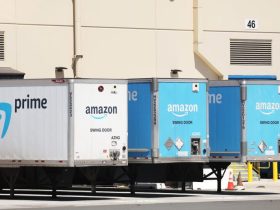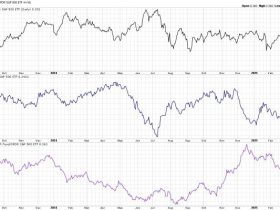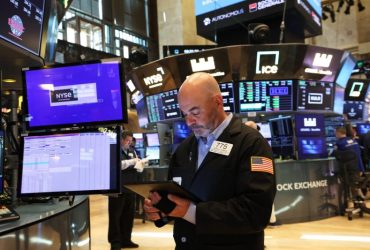The expanse of the food and beverages market has grown dramatically, especially over the last two decades. This industry has witnessed substantial motion with innovation in processes, products, and services to keep pace with the rapidly changing consumer preferences.
However, this multi-billion-dollar business vertical, while showing a commendable growth pace, is also facing various obstacles. While some of the challenges have been persistent in the F&B industry, some new issues have cropped up in recent times. A paradigm shift has been observed in consumer eating habits as more people prefer sugar-free and fat-free products to maintain good health. This has encouraged food producers to bring various changes in the present manufacturing process and effectively tackle some of the major challenges of this sector.
Moreover, this shift has not only been restricted to sugar and fat contents but has broadly extended to demand for organic, non-GMO, and locally sourced ingredients, underscoring a robust consumer inclination towards health-conscious and sustainable living. Consequently, producers are now grappling with the intricate balance of adhering to stringent quality standards while ensuring scalability and cost-effectiveness of production.
1) Continued Environmental Pledges and the Circular Economy
There has been a constant growth in industrialization and the food and beverages sector has expanded with it. However, this development has had a disastrous impact on the environment which has enforced ‘plastic ban’ – an ideology that has persisted for several years during discussions on international platforms and now come to a realization. With rising awareness of eco-friendliness, excessive consumption and inappropriate disposal of plastic have come up as some of the major issues faced by F&B companies today.
In this scenario, a product with an ‘eco-friendly’ tag connects with the consumer and is likely to amass more lucrative sales than a product that is likely to harm the environment. F&B manufacturers and retailers are now focusing on supply chain management to tackle the present challenges through the adoption of numerous recycling practices and related investments.
For instance, in 2023 Nestle announced a USD 8.7 million investment in a facility in the UK for handling hard-to-recycle plastics. Some other F&B brands have in recent years confirmed the use of recycled plastic or flexible packaging to replace most of their plastic usage. Challenges for food manufacturing and distribution companies will increase as more countries or regional governments impose stricter norms to mitigate pollution.
Recently, the state of California, U.S., unveiled its country-leading regulations to curb single-use plastic usage, presenting bold targets for the F&B sector. Some of the targets under the new law would be:
Recycling of 65% of single-use plastic packaging and food containers by 2032.
Sale of single-use plastic packaging or food ware should be cut down by 25% by 2032.
Should ensure all the plastic food ware and single-use packaging is recyclable or compostable by 2032.
2) Changing Consumer Preferences and Personalization
The increase in food-related disorders has encouraged consumers to bring essential changes in their lifestyles and diets. As a result, more people are getting inclined towards buying foods without added preservatives and sweeteners that might impact one’s health negatively. The prevalence of diabetes has increased over the years and obesity is considered one of the major factors for the same.
Estimates suggest that over 500 million people globally have diabetes, and this number could surpass 1.3 billion by 2030. A large number of consumers today shy away from products containing artificial sweeteners and other added preservatives to avoid developing such health issues.
Another trend that forms the core of the challenges faced by food and beverage market is the rising demand for organic food. As per the Organic Trade Association, sales of organic food in the U.S. exceeded USD 60 billion in 2022. Due to their rich nutrient value, organic foods are witnessing higher demand across the globe. Also, as the population is becoming aware of the harmful effects of pesticides on the environment and health, organic farming is growing exponentially.
With growing concern regarding animal abuse, more and more consumers are shifting towards vegetarian and vegan products, resulting in a decrease in demand for meat and its products, becoming one of the major challenges in the F&B industry. Social platforms have increased awareness about animal abuse, and thus people are inclined towards purchasing products that are labeled “humane-certified”, “cage-free” or the like.
Manufacturing products that guarantee animal safety has become one of the prime challenges for the food and beverage sector, as food manufacturers need to maintain their reputation regarding the ethical treatment of animals. Driven by this, businesses are coming up with plant-based alternatives to keep the retail chains running.
A recent survey by HelloFresh, comprising data from more than 7,500 people from the UK, Germany, Norway, Denmark, and Sweden revealed that 50% of consumers think more people should opt for plant-based nutrition. However, every second person believed plant-based meat alternatives would be better than just plant-based diets, which indicates favorable opportunities for food ingredient manufacturers.
3) Ongoing Legislation and Labeling Standards
The food & beverages industry is governed very strictly by regulatory bodies. Organizations like EPA, FTC, FDA, and OSHA have been diligent in implementing norms concerning the release of healthy products, supervising food labels, maintaining a clean, hygienic environment, and the like. Most businesses are known to quickly adhere to the norms.
However, the regular changes subject to raw material, waste disposal, food quality, documentation, surplus production, etc., have cropped up to be one of the major challenges faced by the food and beverage market. During 2023, the U.S. FDA saw more than 500 food recall events, which was the highest number over a span of 5 years.
Organizations are continuously working to enhance their legislative powers to mitigate the risk of disease or contamination from food products. For instance, the FDA has developed a rule, yet be implemented fully, under which detailed records must be kept on certain foods as they move across the supply chain. It should help in tracing any kind of outbreak in the future.
The role of food labeling lies not just in the identification of products, but also in delivering vital information to consumers. This includes not only the name of the food product but also its ingredients, nutritional information, storage instructions, and sometimes the origin of the product. Listed below are some trends in the labeling of food and beverages that demonstrate how companies need to adapt to sustain market dominance, and reputation, and be compliant with different legislations.
European authorities are contemplating a region-wide food labeling system, where nutrition information, which is only on the back side labels, will be put on front labels too. The EU Commission said in a report that for consumers, especially, older and over-weight people, front-of-pack labels will be useful.
In the APAC region, China has begun revamping its regulations to manage pre-packed food & beverage products. These rules will include compulsory and clearer information on compound ingredients, along with the country of origin. Other nations in the region, such as Thailand, Vietnam, and Philippines have also moved to adopt stricter laws for pre-packaged food labeling.
Carbon label is an emergent method to spread awareness about emissions released as while manufacturing a consumer product. Many organizations are encouraging climate labeling to inform people about the impact of food. For example, Oatly has started campaigning to push food & drink producers in the UK to adopt carbon labeling.
5) Adapting to Accelerated Digital Transformation
Digitalization has swept through the F&B industry, spurred on by the aftermath of the COVID-19 pandemic and changing consumer behaviors. The integration of artificial intelligence (AI) and machine learning in supply chain management could enhance forecasting, reduce waste, and boost efficiencies. Technology such as supply chain analytics allows stakeholders to examine tremendous volumes of data, culminating in actionable business intelligence.
These insights are indispensable in enhancing decision-making from procurement to distribution. Forecasting demand, managing inventory, and improving the end-to-end efficiency of supply chain operations becomes possible. For example, predictive analytics can determine future consumption patterns, enabling precise inventory control, to minimize waste due to perishability.
Realization of digital transformation also brings with it several problems for the F&B market players.
Personalized product recommendations have become a major boost for organizations to ensure continued consumer engagement and customer satisfaction. The use of customer data to analyze trends will help businesses cater to changing user preferences with targeted marketing campaigns. Incorporating modern marketing techniques requires dedicated investment and expertise, creating significant overheads.
Integration of technology such as AI with existing systems and business processes can be complex and resource-intensive, while investing in new infrastructure in unavoidable.
While the analysis of data is critical to bolstering company strategies and product development, acquiring the needed data and its safety is becoming a notable challenge due to cyber threats and privacy laws. Reportedly, F&B organizations worldwide had witnessed around 14 ransomware attacks during the second quarter of 2023, as per Dragos.
Companies leveraging IoT and blockchain for traceability and transparency are now seen as market leaders who set precedence for industry standards. The ability to adapt to such technological disruptions is no longer a competitive edge but a necessity for survival in an ever-evolving market.
5) Economic Constraints and Inflation Pressures
The food markets across the globe are extremely concentrated, in terms of supplies as well as reserves, further leading to inflation. Proactive strategies to manage costs, such as vertical integration and strategic pricing mechanisms, will be instrumental in maintaining profitability amidst fluctuating commodity prices and consumer spending patterns.
The constantly rising inflation in emerging economies and supply chain disruptions are bound to impact the food and beverages industry. Also, when Russia invaded Ukraine in 2022, the prices of oilseed and grains were affected. Since Ukraine was among the major exporters of these products, cereal and grain prices rose by nearly 10.7% in 2023.
Shortage of labor in some areas and increased shipping costs due to regional tensions and oil price volatility also negatively impacted overall prices of ingredient transport and production of F&B products. In fact, across North America and the UK, the lack of skilled professionals has caused problems for many organizations. The UK’s Food and Drink Federation (FDF) said in September 2023 that the region’s F&B industry lost more than USD 1.77 billion over the previous year due to labor shortages.
Regardless of the constant challenges encountered by the food and beverage industry, it is expected to show healthy growth in the future. It remains to be seen how the global market will fare in the upcoming years, propelled by changing lifestyles, disposable income levels, and favorable government reforms. While the influence of the COVID-19 outbreak persists, supply chains are transforming to mitigate future disruptions as F&B companies consider a blend of near-sourcing and diversified sourcing strategies to ensure the continuity of supplies. Investments in logistics technology and inventory management systems are paramount to meeting real-time demands and addressing potential vulnerabilities that might threaten operational flow.













